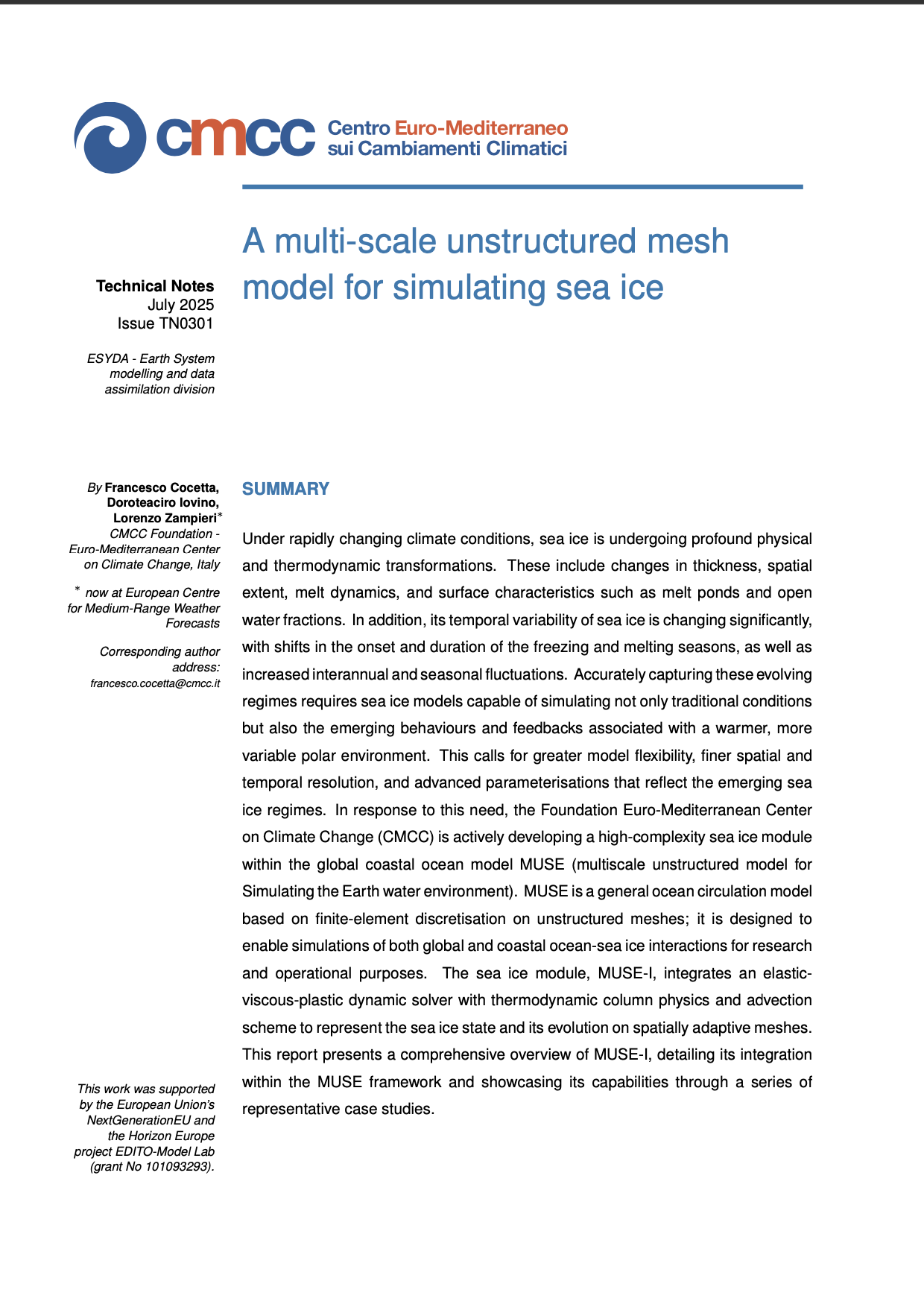Under rapidly changing climate conditions, sea ice is undergoing profound physical and thermodynamic transformations. These include changes in thickness, spatial extent, melt dynamics, and surface characteristics such as melt ponds and open water fractions. In addition, its temporal variability of sea ice is changing significantly, with shifts in the onset and duration of the freezing and melting seasons, as well as increased interannual and seasonal fluctuations. Accurately capturing these evolving regimes requires sea ice models capable of simulating not only traditional conditions but also the emerging behaviours and feedbacks associated with a warmer, more variable polar environment. This calls for greater model flexibility, finer spatial and temporal resolution, and advanced parameterisations that reflect the emerging sea ice regimes. In response to this need, the Foundation Euro-Mediterranean Center on Climate Change (CMCC) is actively developing a high-complexity sea ice module within the global coastal ocean model MUSE (multiscale unstructured model for Simulating the Earth water environment). MUSE is a general ocean circulation model based on finite-element discretisation on unstructured meshes; it is designed to enable simulations of both global and coastal ocean-sea ice interactions for research and operational purposes. The sea ice module, MUSE-I, integrates an elastic- viscous-plastic dynamic solver with thermodynamic column physics and advection scheme to represent the sea ice state and its evolution on spatially adaptive meshes. This report presents a comprehensive overview of MUSE-I, detailing its integration within the MUSE framework and showcasing its capabilities through a series of representative case studies.
Click here to download the technical note (PDF file)
CMCC InstitutesCMCC Divisions


